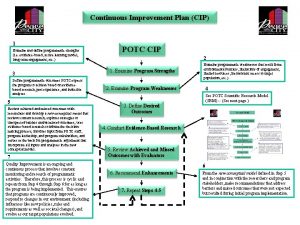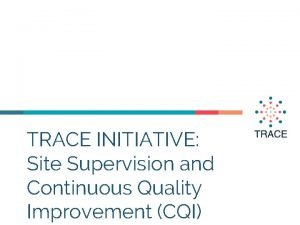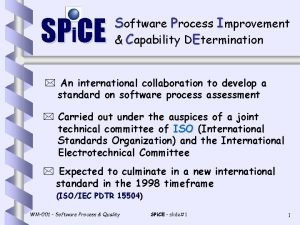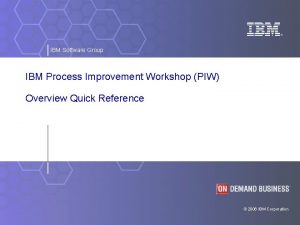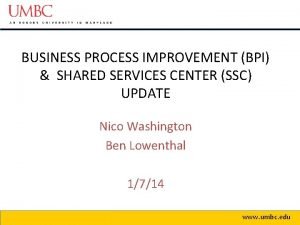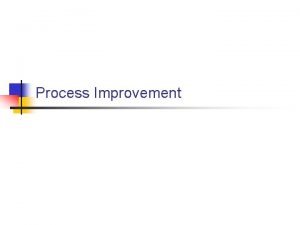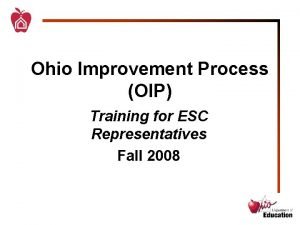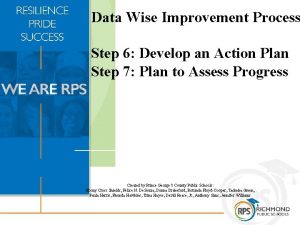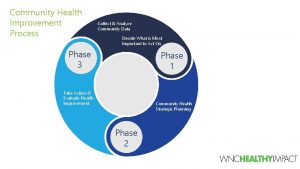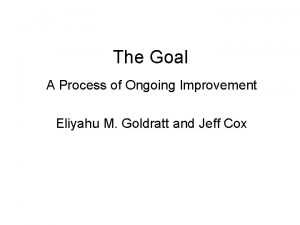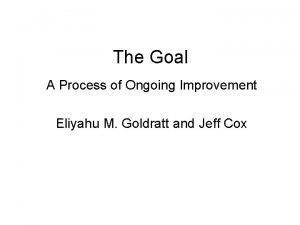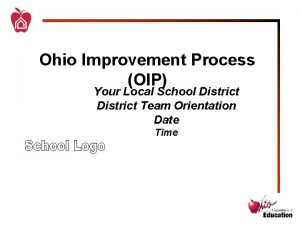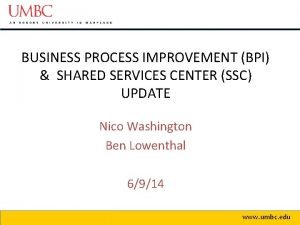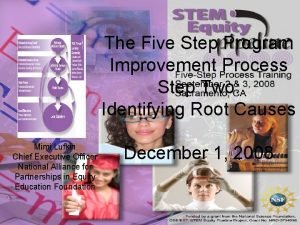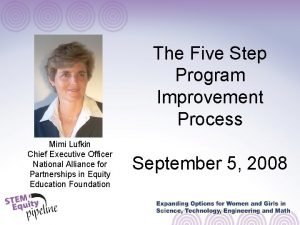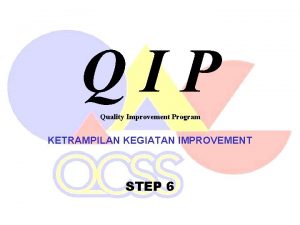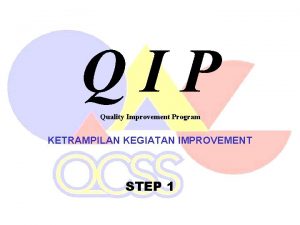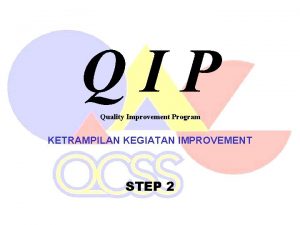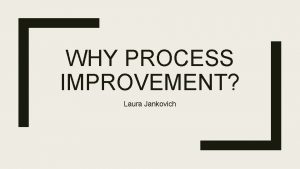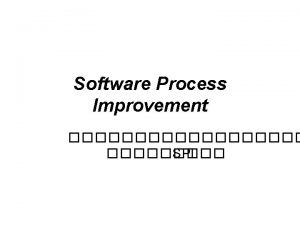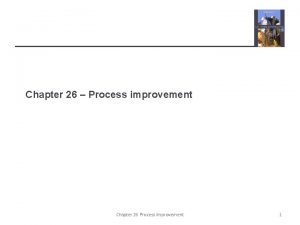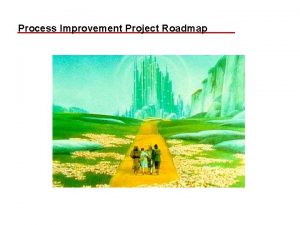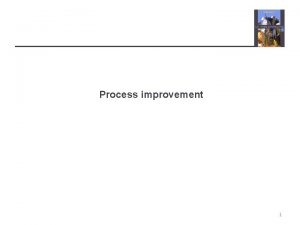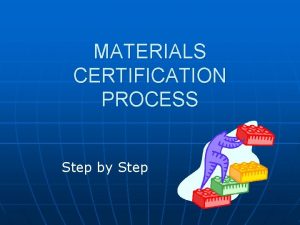The Five Step Program Improvement Process Step Two











































- Slides: 43

The Five Step Program Improvement Process Step Two: Identifying Root Causes Mimi Lufkin Chief Executive Officer National Alliance for Partnerships in Equity Education Foundation December 1, 2008

STEM Equity Pipeline Goals • Build the capacity of the formal education community • Institutionalize the implemented strategies by connecting the outcomes to existing accountability systems • Broaden the commitment to gender equity in STEM education

Model

Poll Who is participating in today’s webinar? 1. 2. 3. 4. 5. 6. School/College Administrator Teacher/Faculty Member Counselor/Student Services Staff State Agency Staff STEM Organization Staff Other

STEP 1 Document Performance Results STEP 5 Implement Solutions STEP 2 Identify Root Causes The Five Step Process STEP 4 Pilot Test and Evaluate Best Solutions STEP 3 Choose Best Solutions

STEP 1 Document Performance Results STEP 5 Implement Solutions STEP 2 Identify Root Causes The Five Step Process STEP 4 Pilot Test and Evaluate Best Solutions STEP 3 Choose Best Solutions

STEP TWO Identify Root Causes

Why Search for Root Causes? • Keep from fixating on the “silver bullet” strategy • Identify the conditions or factors that cause or permit a performance gap to occur – Two types of causes: • Direct cause (i. e. instructional practice) • Indirect cause (i. e. teacher training)

Review Research Summary Root Causes Tables • Chapter 6 Tables 16, 17, 19, and 20 from, “Improving Performance on Perkins III Core Indicators: Summary of Research on Causes and Improvement Strategies” • Authors: Robert Sheets, Mimi Lufkin, and David Stevens for the National Centers for Career & Technical Education • Available at www. stemequitypipeline. org

Review Research Summary Bias Literacy: A review of concepts in research on discrimination By Ruta Sevo, Ph. D. and Daryl E. Chubin, Ph. D. Available at www. stemequitypipeline. org



Root Causes • Social Attitudes – Bias and Discrimination • Gender schema – Assumptions about gender from birth on • Accumulative Advantage – Members of a disadvantaged group have to accumulate more that 1% advantage to be considered the same as the advantaged group • Implicit bias – Unconscious associations

Root Causes • Media Representation – About-face. org

Root Causes • Early Exposure – Most students pursuing a nontraditional career have had a friend or family member influence them – Spark an interest that would otherwise not be evident – The earlier the better

Root Causes • Nontraditional Role Models – Strongest evidence in the research – Family members are significant – Teachers – Mentors

Root Causes • Self-efficacy – Attribution Theory • Girls more likely to attribute success to external factors and failure to internal factors – Stereotype Threat • Stereotype that girls are not as capable as boys in math affects their performance – Locus of Control • When girls feel they are in control of their lives and their futures they are more likely to select nontraditional options

Root Causes • Family Demographics – Girls with lower socio-economic status parents have higher sex-stereotyping scores – Boys with higher socio-economic status parents have higher sex-stereotyping scores – Family structure or level of education has no effect

Poll • Who is the number one influencer of students career choice? 1. 2. 3. 4. 5. 6. School guidance counselor Teacher Peers/Friends Parent Relative Adult/Family Friend

Root Causes • Spouse/Significant Other/Parental Support – Parents are the #1 influence of student college major and career choice – Negative messages from people with emotional influence difficult to overcome.

Root Causes • School Climate – Nontraditional faculty and staff – Acceptable behavior in hallways, cafeteria, school events, busses, etc. – Administration and staff support and encouragement – Extracurricular activities

Root Causes • Career Guidance Materials and Practices – More than just brochures and posters – Subtle messages – Be careful about how you use interest inventories – Creating opportunities to create student interest

Root Causes • Access to and Participation in STEM – Shrinking gender gap in performance on national assessments in math and science between boys and girls – Still significant gaps when looking at gender AND race/ethnicity or socioeconomic status – Girls not translating their academic success in STEM to careers in STEM

Root Causes • Classroom Climate – Fair treatment – Sexual harassment not tolerated or ignored – Supportive learning environment – Subtle messages – Classroom location on campus – Physical environment

Root Causes • Curriculum Materials – Invisibility – Stereotyping – Imbalance/Selectivity – Unreality – Fragmentation/Isolation – Linguistic Bias – Cosmetic Bias – Relevance

Root Causes • Instructional Strategies – Questioning level and wait time – Student/teacher interaction and feedback – Classroom management – Cooperative learning design – Expectations and assessment

Root Causes • Student Attitudes/Peer Influence – Values and beliefs – Acceptance of differences – Bias and stereotypes – Peer support – Peer harassment

Root Causes • Student Isolation Based on Gender – Cohort of underrepresented students in a program are more likely to complete than a single individual – Individuals more likely to • Have trouble integrating effectively in to social structure • Suffer decreased performance • Drop out

Root Causes • Support Services – – – – – Tutoring Child care Transportation Financial Aid Books, Equipment, Tools, Clothing Tuition Modification of Curriculum, Equipment Student/Teacher Aides More

Root Causes • Occupational Segregation and Choice – Men’s work vs. Women’s work – Traditional vs. nontraditional careers – “sticky floor” vs. “glass ceiling” – Low wages of traditionally female occupations – Pay equity issues

Root Causes • Wage Potential – Traditionally female occupations pay significantly less that traditionally male occupations – When men and women are employed in the same occupation, women on average earn less than men. – Nontraditional occupations for women are typically high wage occupations

How to Identify Root Causes • Search for most direct & highest impact causes • Employ a systematic evidence-based process • Draw on current research and evaluation • Formulate and test theories or hypotheses • Use multiple methods and data sources – Note, you’re likely to find multiple causes

Phase 1: Identify Potential Causes • Review Research Literature • Review Program/Institutional Evaluations and Effectiveness Reviews • Conduct Focus Groups • Peer Benchmarking • Interviews & Surveys • Brainstorm

Resources available at www. stemequitypipeline. org • Survey Instruments • How to Conduct Interviews • How to Conduct Focus Groups



Other Resources The New Look Self-Study Illinois Center for Specialized Professional Support

Phase 2: Analyze and Evaluate Potential Causes Group Causes Into Two Categories: – Group 1: Causes Within Your Control • School scheduling • Classroom climate • Faculty awareness and capacity – Group 2: Causes Outside Your Control • Media representation • Family demographics

Phase 3: Test and Evaluate Potential Causes Within Your Control Select root causes that: – Have the strongest theory and evidence to support them – Focus on direct causes of performance gaps – Address the most critical needs – Provide the best opportunity to have high impact on performance – Are supported by stakeholders who will help develop and implement solutions (See page 17 of the OVAE Guidebook)

Which root cause do you think is the most common barrier for students considering a nontraditional career? 1. Career guidance practices 2. Instructional strategies 3. Role models 4. Early exposure 5. Self-efficacy 6. School climate 7. Parental/Family support 8. Peer influence

STEP 1 Document Performance Results STEP 5 Implement Solutions STEP 2 Identify Root Causes The Five Step Process STEP 4 Pilot Test and Evaluate Best Solutions STEP 3 Choose Best Solutions

Next Webinars • Wednesday, December 17, 2008 2 pm ET – Stereotype Threat • Impact on girls performance in math • How teachers can alleviate the effect • Tuesday, January 13, 2009 2 pm ET – Step Three: Identifying Effective Strategies • Effective strategies to eliminate root causes for the low participation and completion of women and girls in STEM related career and technical education programs

Questions? National Alliance for Partnerships in Equity Mimi Lufkin Executive Director P. O. Box 369 Cochranville, PA 19330 610 -593 -8038 phone 610 -593 -7283 fax mimilufkin@napequity. org
 Step 1 in 7 step improvement process
Step 1 in 7 step improvement process Step 1 step 2 step 3 step 4
Step 1 step 2 step 3 step 4 Itil 7 step improvement process
Itil 7 step improvement process Five step decision making process
Five step decision making process 매몰원가
매몰원가 1. denial
1. denial Solving two step inequalities
Solving two step inequalities Solving two step and multi step inequalities
Solving two step and multi step inequalities The process of photosynthesis step by step
The process of photosynthesis step by step Step-by step inventory process
Step-by step inventory process Whats a photogram
Whats a photogram Process of making apple juice step by step
Process of making apple juice step by step Fabric process step by step
Fabric process step by step Cip 1
Cip 1 Airport improvement program aip
Airport improvement program aip Continuous quality improvement program planning worksheet
Continuous quality improvement program planning worksheet Missippi's literacy program shows improvement
Missippi's literacy program shows improvement Profit improvement program
Profit improvement program Productivity improvement program
Productivity improvement program Ibm process improvement
Ibm process improvement Altran nord
Altran nord Swat presentation
Swat presentation Spi in software engineering
Spi in software engineering Ibm process improvement
Ibm process improvement Shared services process improvement
Shared services process improvement Test process improvement
Test process improvement Community health improvement process
Community health improvement process Process improvement workshop agenda
Process improvement workshop agenda Oip training
Oip training Data wise process
Data wise process Community health improvement process
Community health improvement process Herbie the goal
Herbie the goal A process of ongoing improvement
A process of ongoing improvement Rapid process improvement methodology
Rapid process improvement methodology Ohio improvement process
Ohio improvement process Shared services process improvement
Shared services process improvement Rapid process improvement workshop
Rapid process improvement workshop Five years have past five summers with the length
Five years have past five summers with the length One in five challenge
One in five challenge 5 elements and 5 senses
5 elements and 5 senses Drum and colors macbeth
Drum and colors macbeth Five step concept generation method
Five step concept generation method Greeting friendly letter
Greeting friendly letter Bibliography with footnotes
Bibliography with footnotes













